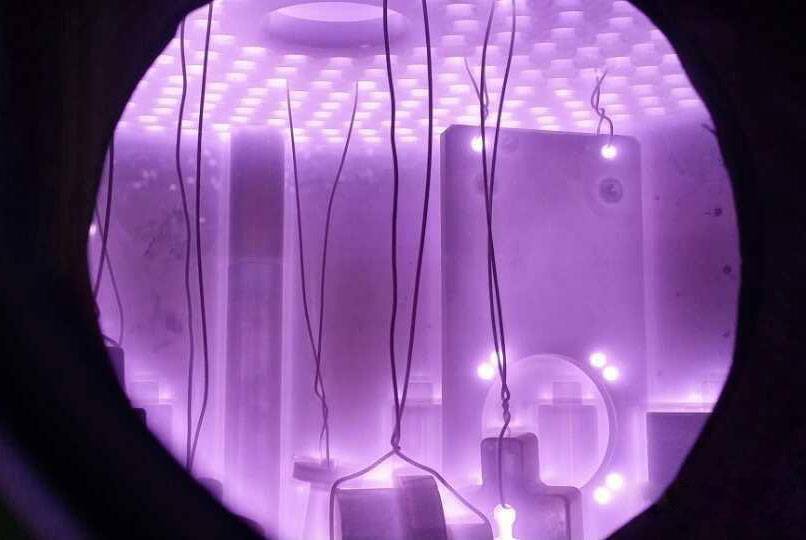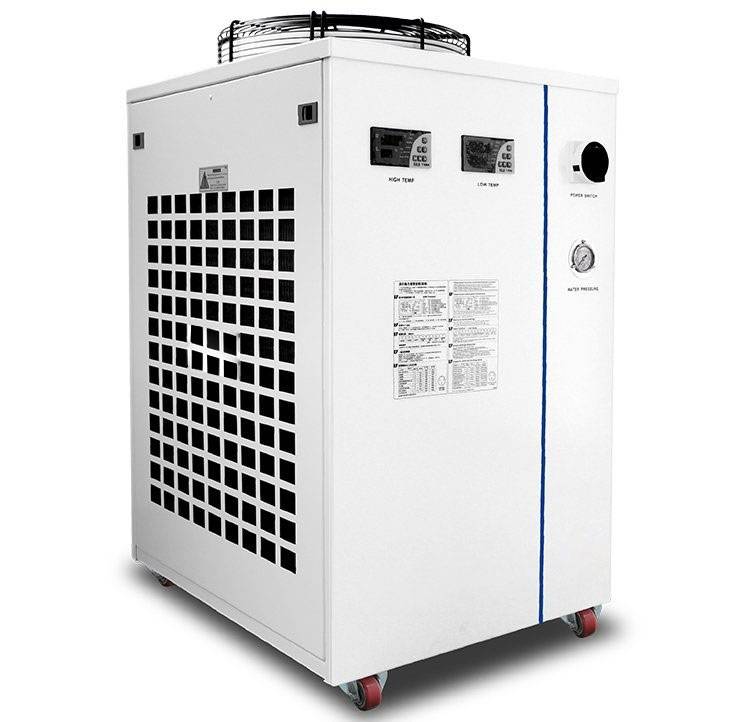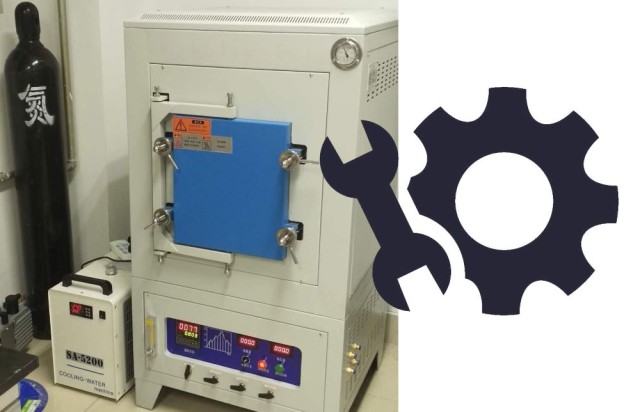Introduction to Atmosphere Furnaces
Characteristics and Components
An atmosphere furnace is distinguished by its ability to maintain a specific temperature and introduce an artificially prepared atmosphere into the furnace. This controlled environment is essential for various heat treatment processes, including gas carburizing, carbonitriding, bright quenching, annealing, and normalizing. These processes are crucial for altering the mechanical properties of materials, such as increasing hardness or improving ductility.
The atmosphere furnace primarily comprises several critical components:
-
Furnace Body: The main structure that houses the heating elements and workpieces. It is designed to withstand high temperatures and maintain the integrity of the atmosphere within.
-
Liner Mobile Frame: This includes the water and gas systems, which are integral for cooling and maintaining the atmosphere. The mobile frame allows for flexibility in positioning and movement of the furnace components.
-
Resistance Wire Heating System: A set of resistance wires that generate heat, crucial for achieving the necessary temperature for the heat treatment processes.
-
Temperature Control and Display System: This system is essential for monitoring and regulating the temperature within the furnace. It ensures that the temperature remains consistent and within the required parameters for the specific heat treatment process.
Each of these components plays a vital role in ensuring the efficiency and effectiveness of the atmosphere furnace, making it a versatile tool in industrial heat treatment applications.

Precautions for Safe Operation
Grounding and Installation
Proper grounding and installation are critical for the safe operation of atmosphere furnaces. The furnace and its control cabinet must be grounded as a whole to ensure electrical safety. The grounding resistance of the grounding wire should be meticulously maintained, with a recommended maximum resistance of less than 4 Ω. This low resistance ensures that any electrical faults are effectively diverted to the ground, preventing potential hazards.
When installing the resistance wire, it is crucial to handle it with care. Applying undue force during installation can lead to breakage, which not only compromises the integrity of the grounding system but also poses a risk of electrical shock or equipment malfunction. Therefore, installers should avoid using excessive force and ensure that the wire is installed smoothly and securely.
For a more detailed understanding of the importance of grounding resistance and the correct installation procedure, refer to the table below:
| Aspect | Details |
|---|---|
| Grounding Resistance | Should be less than 4 Ω to ensure effective fault diversion. |
| Installation Force | Avoid excessive force to prevent wire breakage and maintain system integrity. |
Ensuring proper grounding and careful installation not only safeguards the equipment but also protects operators from potential electrical hazards, thereby enhancing overall safety and operational efficiency.
Workpiece Preparation
Before placing the workpiece car into the furnace, meticulous preparation is essential to ensure optimal furnace performance and safety. The first step involves thorough cleaning of the workpiece car to remove any surface contaminants such as dirt, oil, or debris. This is crucial as these contaminants can react with the furnace atmosphere, leading to unwanted chemical reactions or even contamination of the entire batch of workpieces.
Following cleaning, the workpiece car must be completely dried. Moisture, if present, can cause several issues. It can lead to localized steam formation, which may result in uneven heating or even damage to the furnace components. Moreover, moisture can interact with the furnace atmosphere, potentially altering the desired heat treatment conditions. For instance, in processes like gas carburizing or carbonitriding, even trace amounts of moisture can significantly affect the carbon potential of the atmosphere, thereby compromising the quality of the final product.
To summarize, proper workpiece preparation involves:
- Cleaning: Removing all surface contaminants.
- Drying: Ensuring the workpiece car is completely moisture-free.
This meticulous approach not only safeguards the furnace but also ensures the consistency and quality of the heat treatment process.
Furnace Core and Reaction Box
Ensuring the precise positioning of the furnace core is crucial for the optimal performance of an atmosphere furnace. The furnace core, often the heart of the heating process, must be accurately aligned to facilitate uniform heat distribution and prevent any potential damage to the internal components. This accuracy is particularly important during operations such as gas carburizing, where even minor misalignments can lead to inconsistent treatment of the workpieces.
The reaction box, another critical component, must be securely and vertically suspended. This vertical suspension ensures that the reaction processes within the box proceed smoothly and without interference. Any deviation from this vertical alignment can cause uneven reactions, potentially leading to substandard treatment results or even safety hazards. For instance, during carbonitriding, a process that involves both carbon and nitrogen diffusion into the workpiece, maintaining the vertical suspension of the reaction box is essential to achieve the desired metallurgical properties.
In summary, the meticulous attention to the positioning of the furnace core and the vertical suspension of the reaction box are non-negotiable aspects of operating an atmosphere furnace safely and effectively. These practices not only enhance the quality of the heat treatment processes but also mitigate risks associated with improper setup.

Fault Detection and Handling
When operating an atmosphere furnace, it is crucial to remain vigilant for any signs of malfunction. Specifically, if transmission parts become jammed, limit switches fail to engage, or control systems exhibit erratic behavior, immediate action is required. The first step in such scenarios is to halt all operations to prevent further damage or safety hazards.
To effectively manage these issues, operators should follow a systematic approach:
- Immediate Halt: Stop the furnace operation as soon as a fault is detected.
- Diagnostic Check: Conduct a thorough inspection to identify the root cause of the problem.
- Manual Override: Utilize manual controls to safely bring the system to a standstill if automated controls are unresponsive.
- Fault Removal: Address the identified issue by repairing or replacing faulty components.
- System Reset: After rectifying the fault, reset the system and perform a test run to ensure normal operation.
By adhering to these steps, operators can mitigate risks and ensure the continued safe and efficient operation of the atmosphere furnace.
Post-Operation Cleanup
After the furnace charge has been released, it is imperative to ensure that the hopper closer is securely closed. This step is crucial to prevent any residual material from escaping and potentially causing hazards. Once the loading process is complete, meticulous cleanup of any spent material or graphite that may have scattered onto the end-wall tie rod is essential.
The cleanup process involves several steps to ensure the furnace remains in optimal condition:
-
Inspection and Removal: Carefully inspect the end-wall tie rod for any debris or graphite particles. Use appropriate tools to remove these materials without causing damage to the rod or surrounding components.
-
Thorough Cleaning: After removing visible debris, conduct a thorough cleaning using a soft brush or compressed air to ensure no residual particles remain. This step is vital to prevent any potential contamination during subsequent operations.
-
Verification: Finally, verify that the cleanup has been effective by conducting a visual inspection and ensuring that no foreign materials are left on the tie rod. This ensures the longevity and efficiency of the furnace.
By adhering to these post-operation cleanup procedures, operators can maintain the integrity and performance of the atmosphere furnace, ensuring safe and effective future operations.
Temperature Management
Proper temperature management is crucial for the safe and effective operation of atmosphere furnaces. The maximum temperature refers to the surface temperature of the heating element, which is typically 100°C higher than the surrounding medium or the temperature of the material being heated. This temperature differential is essential to ensure efficient heat transfer and prevent overheating.
To maintain optimal temperature conditions, it is imperative to avoid overloading the furnace. Overloading can lead to several issues, including:
- Reduced Efficiency: Overloading can cause the heating element to work harder than necessary, leading to inefficiencies and increased energy consumption.
- Potential Damage: Prolonged operation under overload conditions can damage the heating element and other critical components, necessitating costly repairs or replacements.
- Safety Risks: Overloading increases the risk of overheating, which can pose safety hazards such as fire or equipment failure.
To prevent these issues, operators should adhere to the following guidelines:
- Monitor Temperature Regularly: Use the temperature control and display system to continuously monitor the furnace's temperature.
- Adjust Load Accordingly: Ensure that the load placed in the furnace does not exceed the recommended capacity.
- Implement Preventive Maintenance: Regularly inspect and maintain the heating system to ensure it operates within safe parameters.
By carefully managing temperature and avoiding overload conditions, operators can enhance the longevity and reliability of their atmosphere furnaces.
Avoiding Reactive Materials
When operating an atmosphere furnace, it is crucial to avoid introducing materials that may react with the heating elements. Such reactions can lead to unpredictable outcomes, including potential damage to the furnace and unsafe working conditions. The heating elements in an atmosphere furnace are designed to withstand specific conditions, and introducing reactive materials can compromise their integrity and efficiency.
To prevent such issues, always ensure that the products being heated are thoroughly vetted for their compatibility with the furnace's heating elements. This precaution is particularly important when dealing with materials that have known reactivity with common heating elements like resistance wires. By doing so, you not only protect the furnace but also ensure the safety and reliability of the heat treatment process.
Additionally, maintaining a comprehensive understanding of the chemical properties of the materials being processed can help in identifying potential reactants. This knowledge can be leveraged to develop a safe operating procedure that excludes reactive materials from the heating process. In essence, by being proactive in material selection, you can significantly reduce the risk of adverse reactions and ensure the longevity of your atmosphere furnace.
Water-Cooled System Maintenance
To ensure the optimal performance of a water-cooled system, regular monthly inspections are essential. During these inspections, it is crucial to check all components, including water pumps, cooling towers, and water pipes, to ensure they are functioning correctly. Additionally, cleaning the system regularly helps prevent clogging and damage, which can disrupt the cooling process.
In cases where a serpentine cooling water pipe becomes clogged, immediate action is required. The first step is to disconnect the water line from the water source to prevent further issues. Once disconnected, the system should be drained thoroughly. To clear the blockage, compressed air can be used to blow through the pipes, effectively dislodging any debris. Alternatively, a dilute acetic acid solution can be employed for flushing, which helps dissolve and remove mineral deposits that may have accumulated over time.

Moreover, it is important to inspect all interfaces and connections within the cooling water system. Ensuring there is no leakage or water seepage can prevent potential system failures. Regularly replacing or replenishing the cooling water also helps mitigate issues related to corrosion and scale buildup, thereby maintaining the system's efficiency and longevity.
Handling Vacuum Systems
Operating an atmosphere furnace requires careful management of its vacuum system to ensure safety and efficiency. The vacuum system, which includes the vacuum vessel, various types of pumps (mechanical, booster, diffusion, turbomolecular, and holding pumps), associated piping manifolds, and a series of valves (mechanical pump, high vacuum isolation, vacuum release, and backing valves), plays a crucial role in maintaining the controlled environment within the furnace. Additionally, vacuum measurement equipment such as molecule counters and traps are integral components that help monitor and maintain the vacuum integrity.
When managing the vacuum system, it is imperative to avoid sudden disruptions that could compromise the system's integrity. For instance, increasing the furnace temperature should be done gradually to prevent rapid pressure changes that could damage the vacuum components. Similarly, the furnace door should never be opened abruptly while the vacuum system is in operation, as this could lead to a rapid influx of atmospheric pressure, potentially causing mechanical failure or safety hazards.
To maintain the vacuum system effectively, operators must adhere to several best practices:
- Gradual Temperature Adjustments: Ensure that temperature changes within the furnace are made incrementally to prevent sudden pressure fluctuations.
- Controlled Door Operations: Always operate the furnace door with caution, ensuring it is opened only when the vacuum system is properly vented and depressurized.
- Regular Maintenance: Conduct regular inspections and maintenance of all vacuum system components, including pumps, valves, and measurement equipment, to ensure their optimal performance and longevity.
- Operator Training: Provide comprehensive training for operators to understand the critical role of the vacuum system and the proper procedures for its management.
By following these guidelines, operators can ensure the safe and efficient operation of the atmosphere furnace, minimizing the risk of damage to the vacuum system and maintaining a controlled environment for precise heat treatments.
Hazardous Atmospheres
Operating within atmosphere furnaces presents several inherent risks due to the presence of hazardous atmospheres. These risks can be systematically categorized into three primary types: fire, explosion, and toxicity.
Fire Hazards:
One of the most immediate dangers is the risk of fire. When the atmosphere within the furnace contains more than 4% of combustible gases, it becomes highly flammable. The primary combustible gases include hydrogen (H₂), carbon monoxide (CO), methane (CH₄), and other hydrocarbon fuel gases. These gases, when present in significant concentrations, can ignite under the right conditions, posing a severe threat to both equipment and personnel.
Explosion Risks:
In addition to fire, the atmosphere within a furnace can also lead to explosive conditions. This occurs when combustible gases mix with air in specific ratios and under certain environmental conditions, such as elevated temperatures or pressures. The resulting explosion can cause catastrophic damage, underscoring the importance of precise gas composition monitoring and control.
Toxicity Concerns:
Lastly, many furnace atmospheres contain toxic gases, with carbon monoxide (CO) being one of the most common. Exposure to these toxic gases can lead to severe health issues, including respiratory problems and even death if not properly managed. Ensuring adequate ventilation and employing gas detection systems are critical measures to mitigate this risk.
Understanding and managing these hazards is essential for the safe and effective operation of atmosphere furnaces.
Related Products
- 1200℃ Controlled Atmosphere Furnace Nitrogen Inert Atmosphere Furnace
- 1400℃ Controlled Atmosphere Furnace with Nitrogen and Inert Atmosphere
- Controlled Nitrogen Inert Hydrogen Atmosphere Furnace
- Mesh belt controlled atmosphere furnace
- 1700℃ Controlled Atmosphere Furnace Nitrogen Inert Atmosphere Furnace
Related Articles
- Exploring the Using a Chamber Furnace for Industrial and Laboratory Applications
- Atmosphere Furnaces: Comprehensive Guide to Controlled Heat Treatment
- How Controlled Atmosphere Furnaces Improve Quality and Consistency in Heat Treatment
- Controlled Atmosphere Furnace: Comprehensive Guide to Advanced Heat Treatment
- The Benefits of Controlled Atmosphere Furnaces for Sintering and Annealing Processes


















